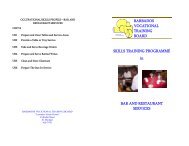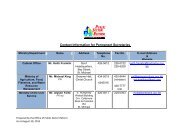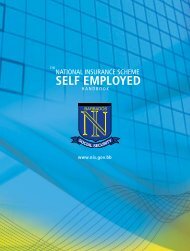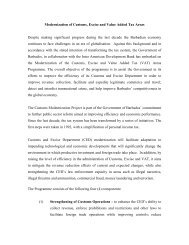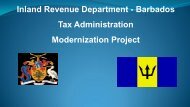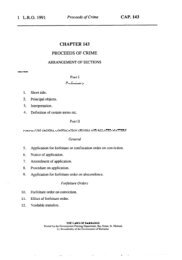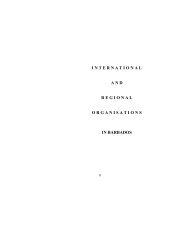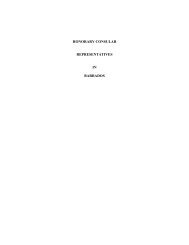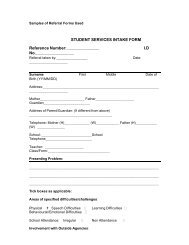Revised Central Bank-AMLA Guidelines - Anti-Money Laundering ...
Revised Central Bank-AMLA Guidelines - Anti-Money Laundering ...
Revised Central Bank-AMLA Guidelines - Anti-Money Laundering ...
You also want an ePaper? Increase the reach of your titles
YUMPU automatically turns print PDFs into web optimized ePapers that Google loves.
AML/CFT GUIDELINEISSUED BY THECENTRAL BANK OF BARBADOSIN CONJUNCTION WITH THE ANTI-MONEY LAUNDERING AUTHORITYMAY 2011records are stored off the premises of the licensee.In the case of a merger or acquisition, the licensee should ensure that the records describedabove can be readily retrieved. Where the records are kept under a contractual arrangement byan entity other than a licensee, the licensee is responsible for retrieving those records before theend of the contractual arrangement.The nature of records that should be retained is set out at Section 2 of the MLFTA, which defines abusiness arrangement, business transaction and business transaction record.10.1 Internal and External RecordsLicensees should maintain records related to unusual and suspicious business transactions for noless than 5 years. These should include:i. All reports made by staff to the Compliance Officer;ii. The internal written findings of transactions investigated. This applies irrespective ofwhether a suspicious report was made;iii. Consideration of those reports and of any action taken; andiv. Reports by the Compliance officer to senior management and board of directors.10.2 Training RecordsIn order to provide evidence of compliance with Section 21 of the MLFTA at a minimum, a licenseeshould maintain the following information:Details and contents of the training programme provided to staff members;Names of staff receiving the training;Dates that training sessions were held;Test results carried out to measure staff understanding of money laundering andterrorist financing requirements; andAn ongoing training plan.11.0 TRAINING AND AWARENESSAn integral element of the fight against money laundering and the financing of terrorism is theawareness of those charged with the responsibility of identifying and analysing potential illicittransactions. Therefore, licensees should establish on-going employee training programmes.Training should be targeted at all employees but added emphasis should be placed on the trainingof the Compliance Officer and the compliance and audit staff because of their critical role insensitising the broader staff complement to AML/CFT issues and ensuring compliance with policyand procedures. Additionally, front line staff should be targeted so as to enable them to respond<strong>Anti</strong>-<strong>Money</strong> <strong>Laundering</strong>/Combating Terrorist Financing Guideline May 2011 29<strong>Bank</strong> Supervision DepartmentCENTRAL BANK OF BARBADOS



